For as long as he can remember, SJC Long Island junior Alex Pushnick has been fascinated by sharks.
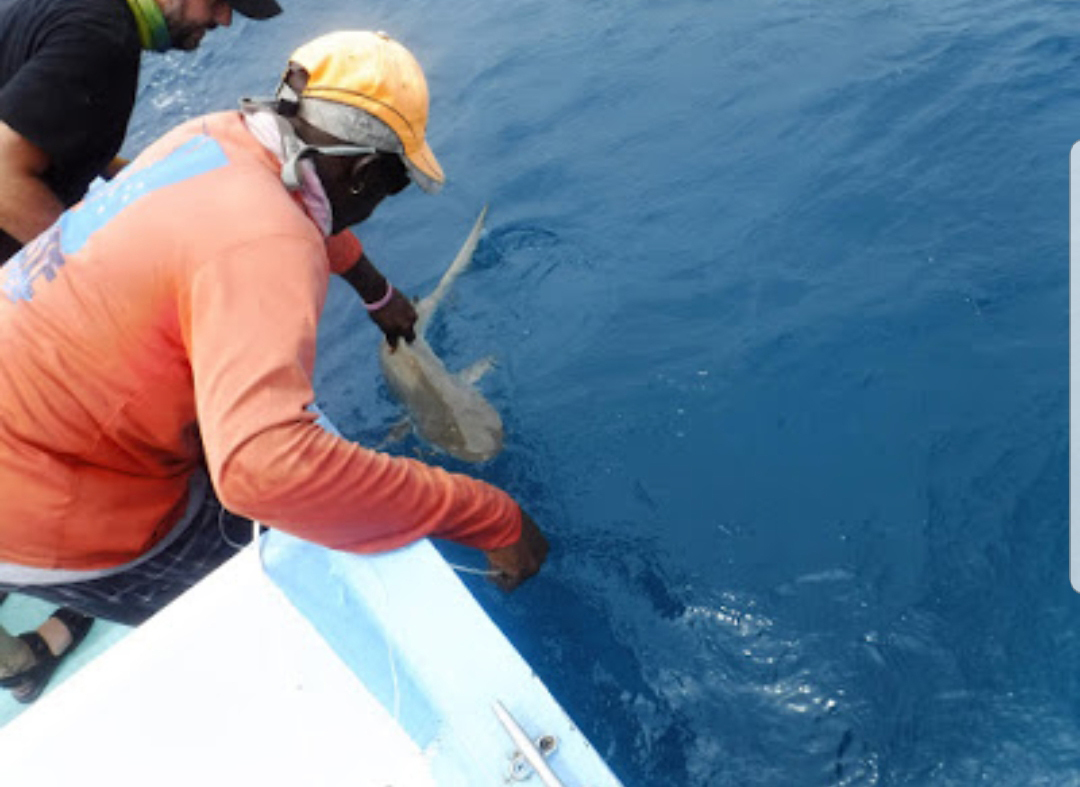 When he was accepted to intern at the Earthwatch Institute’s Shark and Ray Conservation in Belize from June 13 to June 20, Pushnick, a biology major, jumped at what he considered the chance of a lifetime.
When he was accepted to intern at the Earthwatch Institute’s Shark and Ray Conservation in Belize from June 13 to June 20, Pushnick, a biology major, jumped at what he considered the chance of a lifetime.
“It was an amazing experience to be accepted and to be a part of this internship,” Pushnick, 20, said. “Sharks have always had a special place in me, so being a part of this program was incredible. I was always fascinated by animals’ behaviors, niches and how their bodies physically work and how it benefits them for their environment.”
Hooked to the Idea
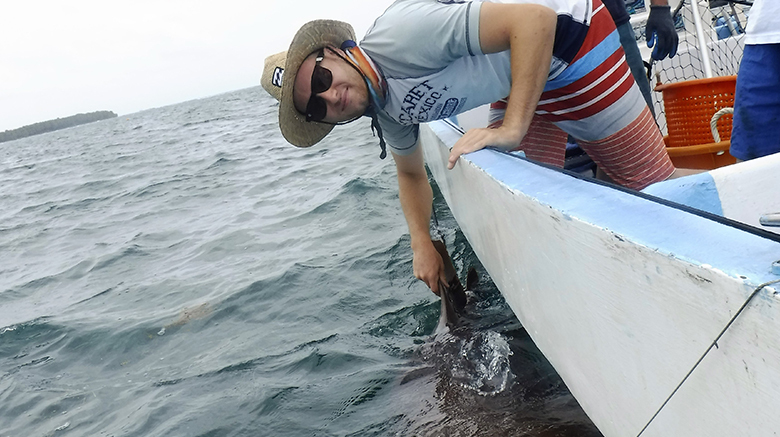 Pushnick found the internship with the help of Coordinator of Global Studies Linda Lubranski, and he was excited about the opportunity to be involved in the research.
Pushnick found the internship with the help of Coordinator of Global Studies Linda Lubranski, and he was excited about the opportunity to be involved in the research.
“The research is to help determine the current population to see if the marine reserve is having an impact on the sharks,” Pushnick said. “It’s also to see if the sharks at Glover’s Reef Atoll stay there throughout their life, or if they leave and come back to use the shallow waters as breeding grounds.”
After running the position by Francis Antonowich, Ph.D., professor and chair of the biology department, and Konstantine Rountos, Ph.D., assistant professor of biology, the internship was approved and his application was accepted.
Reeling It In
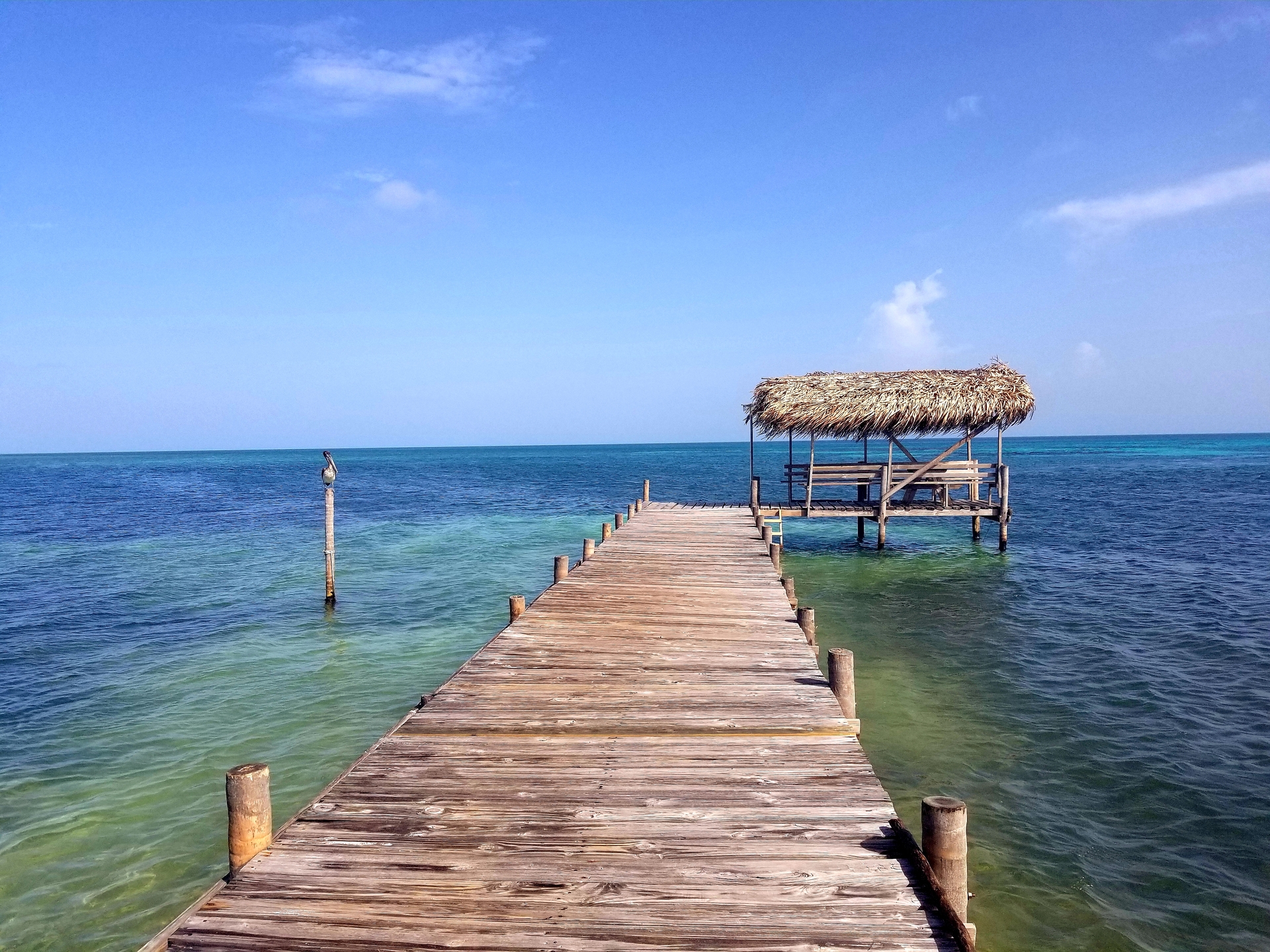 “Three flights, a half-hour car ride and a two-hour boat ride later, I officially landed at the research station located on Middle Caye Island in Glover’s Reef Atoll,” said Pushnick of Manorville, New York. “Traveling alone to Belize was an adventure. This was not my first time traveling internationally, but it was my first time doing it alone.”
“Three flights, a half-hour car ride and a two-hour boat ride later, I officially landed at the research station located on Middle Caye Island in Glover’s Reef Atoll,” said Pushnick of Manorville, New York. “Traveling alone to Belize was an adventure. This was not my first time traveling internationally, but it was my first time doing it alone.”
On the first day of the internship, the conservation’s head research scientist Demian Chapman, Ph.D., an internationally recognized shark expert, informed the interns of the work they would be doing: catching sharks, taking their measurements at three locations, checking to see if the sharks were tagged with transponders and tagging them if they were not.
“Passive Integrated Transponder or PIT helps scientists track individual organisms by providing a reliable lifetime ‘barcode’ for an individual animal,” Pushnick explained. “These PIT tags are about the size of a grain of rice and are inserted just below the dorsal fin via a syringe. The serial number from the PIT tag would be recorded before being inserted. Once a PIT tag is inserted, it is scanned to make sure its working.”
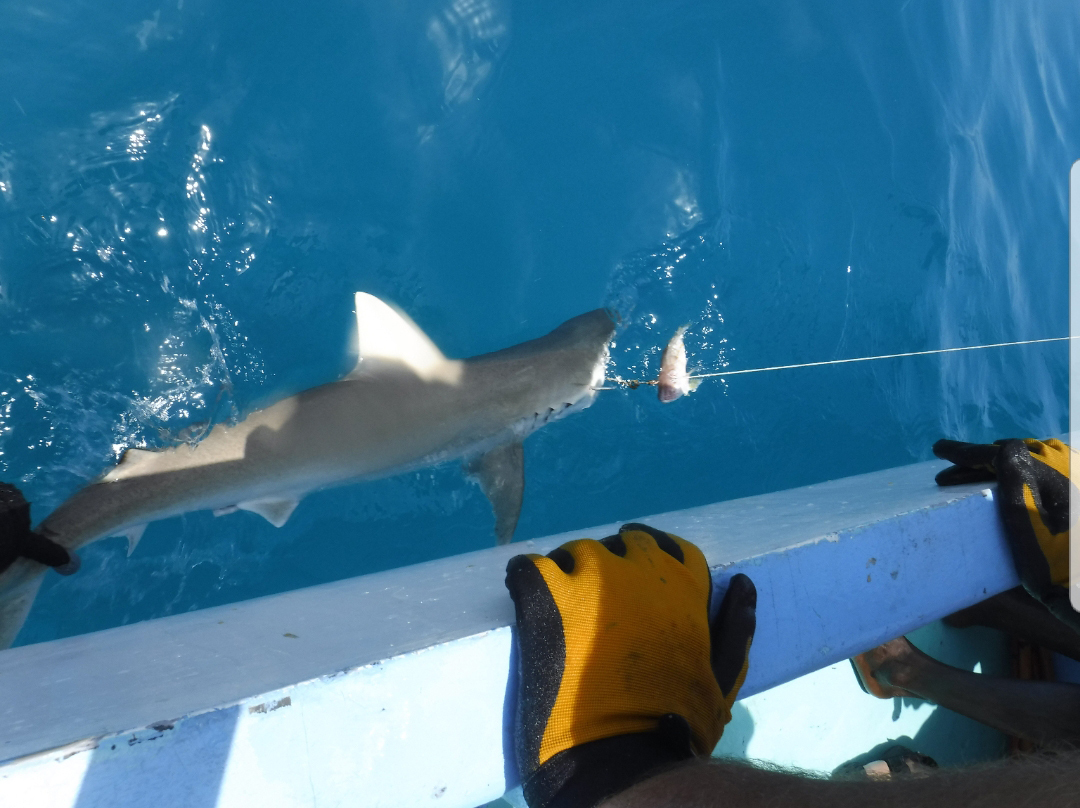 The lead scientists also inserted transmitters into the sharks to track their locations. After that, the sharks were named and released. All of this would be performed in under five minutes to insure the shark’s health was as good as possible upon release.
The lead scientists also inserted transmitters into the sharks to track their locations. After that, the sharks were named and released. All of this would be performed in under five minutes to insure the shark’s health was as good as possible upon release.
Similar research was also collected from stingrays once their barb was cut.
“We worked with about five different types of sharks,” Pushnick said. “We were mainly targeting Caribbean Reef Shark, but we also did work on lemon, nurse, blacknose and sharpnose sharks. We caught about 15 in the time I was there.”
All Lined Up for the Future
After graduating from St. Joseph’s College, Pushnick plans to attend medical school and possibly join Doctors Without Borders.
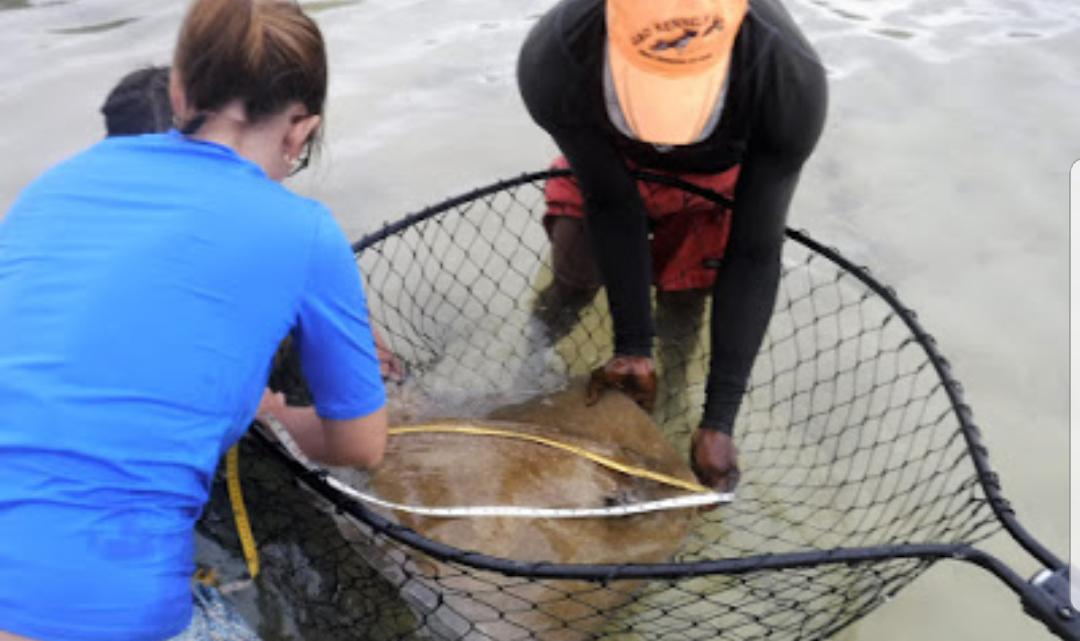 “My dream job would be just to travel and live a life of adventure, experiencing new culture while traveling the world,” he said.
“My dream job would be just to travel and live a life of adventure, experiencing new culture while traveling the world,” he said.
Pushnick got a taste for this life while serving his internship in Belize.
“The island was run by locals, and they prepared all the food, which was amazing. Most of it was chicken or pork, but the spices opened a whole new cultural world. By living like the locals, it brought a new respect to just living life as is, and it shows how you don’t need much for happiness.”
